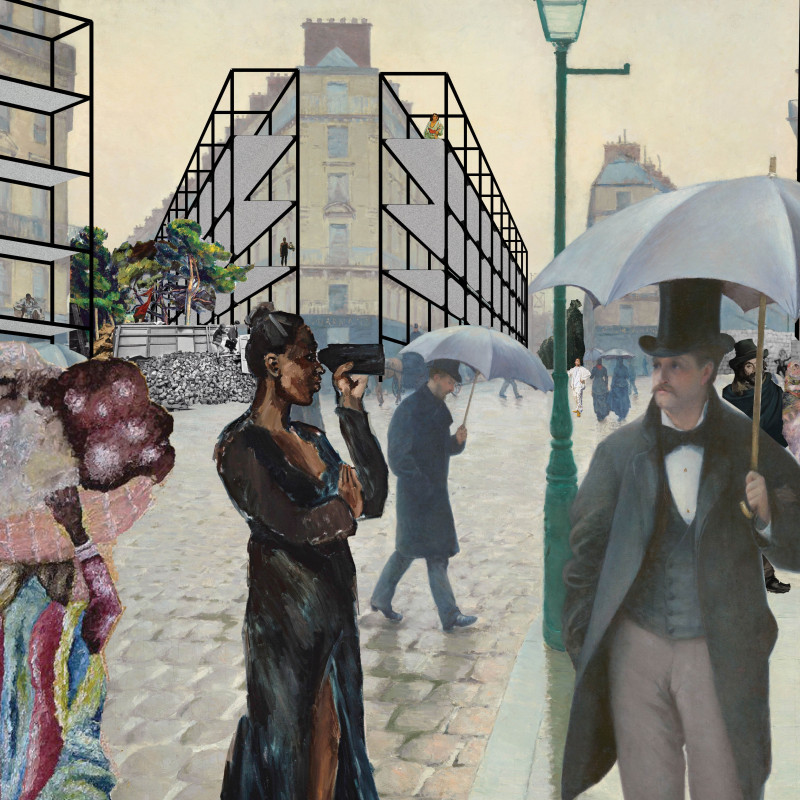5 key facts about this project
The architectural design project is situated in Paris' 8th arrondissement, an area known for its historical and cultural significance. This project addresses the pressing need for affordable housing while emphasizing community interaction and social equity. It challenges existing urban structures, redefining how public and private spaces coexist within the city. Through thoughtful design, it seeks to revitalize a portion of urban space that has often prioritized wealth over community needs.
Community and Public Space Integration
A key aspect of this project is its integration of communal spaces alongside residential units. The design employs a variety of spatial configurations, including blocks, plazas, and pathways, each serving distinct functions while collectively fostering neighborhood connectivity. The blocks are designed to accommodate a mix of housing types, promoting diversity among residents. Public plazas act as gathering points, designed to enhance social interaction and civic engagement. The innovative use of pathways strategically links various spaces, encouraging pedestrian movement and reducing reliance on vehicular traffic.
The architecture also incorporates elements symbolizing historical and cultural narratives. The design reflects local heritage, intertwining modernity with the essence of Parisian history. This sensitivity to context distinguishes the project, as it brings together the old and new in a cohesive urban fabric.
Sustainable Materiality and Construction Techniques
Materiality plays a crucial role in this architectural project, as it employs a palette focused on sustainability and community engagement. Concrete is used for its structural benefits, while steel elements provide both durability and flexibility in design. Glass facades offer transparency, facilitating connections between interior spaces and the surrounding environment. The use of wood in select areas enhances the tactile quality of interiors, fostering a warm and inviting atmosphere.
Unique to this project is its focus on adaptive reuse principles, allowing it to not only serve new functions but also retain the essence of the existing urban landscape. Scaffolding elements convey a narrative of construction and transformation, visually representing the ongoing evolution of urban space.
The project embodies a commitment to environmental sustainability, featuring green spaces that contribute to biodiversity and improve the urban microclimate. These design decisions reflect a broader consideration of ecological impacts, ensuring that the architecture complements its environment rather than competing with it.
Exploring Architectural Elements in Detail
For those interested in a detailed examination of the design, it is advisable to review the architectural plans and sections that illustrate the intricate layout and spatial organization. The architectural designs showcase how the interplay of form and function has been carefully orchestrated to support community objectives. This project represents a progressive approach to urban architecture, merging contemporary needs with traditional values.
Further exploration of the architectural ideas within this project will provide deeper insights into its implications for future urban developments. By understanding the specific design methodologies and spatial arrangements employed, readers can appreciate the project's potential influence on enhancing urban living conditions.





















































